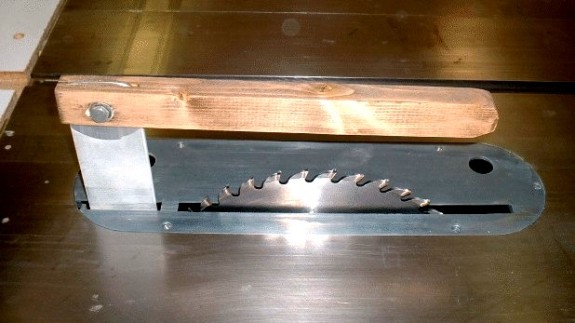
Do it yourself table saw splitter/guard

Roland made a good safety point on my post yesterday that sent me back 25 years to Mr Beaver's woodshop class in
High School. Yes...that was his real name.
The Pro-Tech
10" bench saw was a
hand-me-down and already had the splitter removed. I think I've got it in the barn somewhere.
I decided to take Roland's
advice and look into what it might take to replace the splitter, which
is a piece of metal that prevents the cut wood from drifting back to
the blade.
The above picture is from The
Woodshop.com, a great
website that has encountered this problem due to the original
splitter/guard being too flimsy. They came up with a strudy do it
yourself version that looks easy to replicate. The guard only functions
to prevent scraps from being dropped onto the blade, but the splitter
seems like it should work better than the original.
Want more in-depth information? Browse through our books.
Or explore more posts by date or by subject.
About us: Anna Hess and Mark Hamilton spent over a decade living self-sufficiently in the mountains of Virginia before moving north to start over from scratch in the foothills of Ohio. They've experimented with permaculture, no-till gardening, trailersteading, home-based microbusinesses and much more, writing about their adventures in both blogs and books.
Want to be notified when new comments are posted on this page? Click on the RSS button after you add a comment to subscribe to the comment feed, or simply check the box beside "email replies to me" while writing your comment.

Make sure that the splitter is just as wide as the cut that the blade makes;
If you have saws of different width, you need a splitter for each. The best form for a splitter is one that is curved and follows the back of the blade. The end pointing to the blade should be ground to an edge. Not sharp obviously, but enough to push the wood aside.